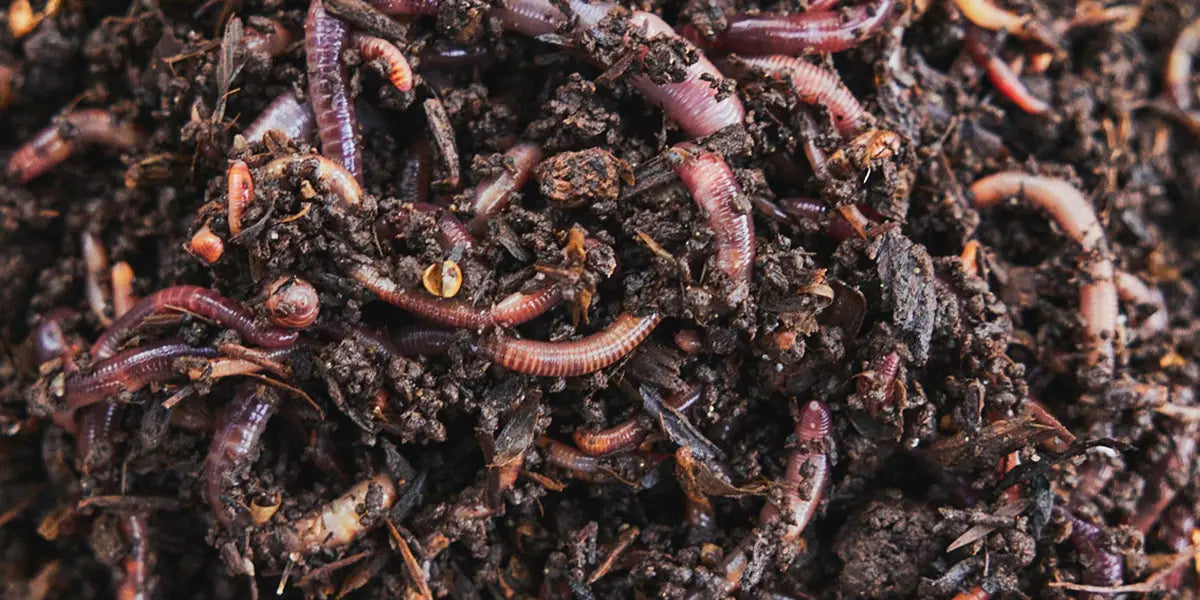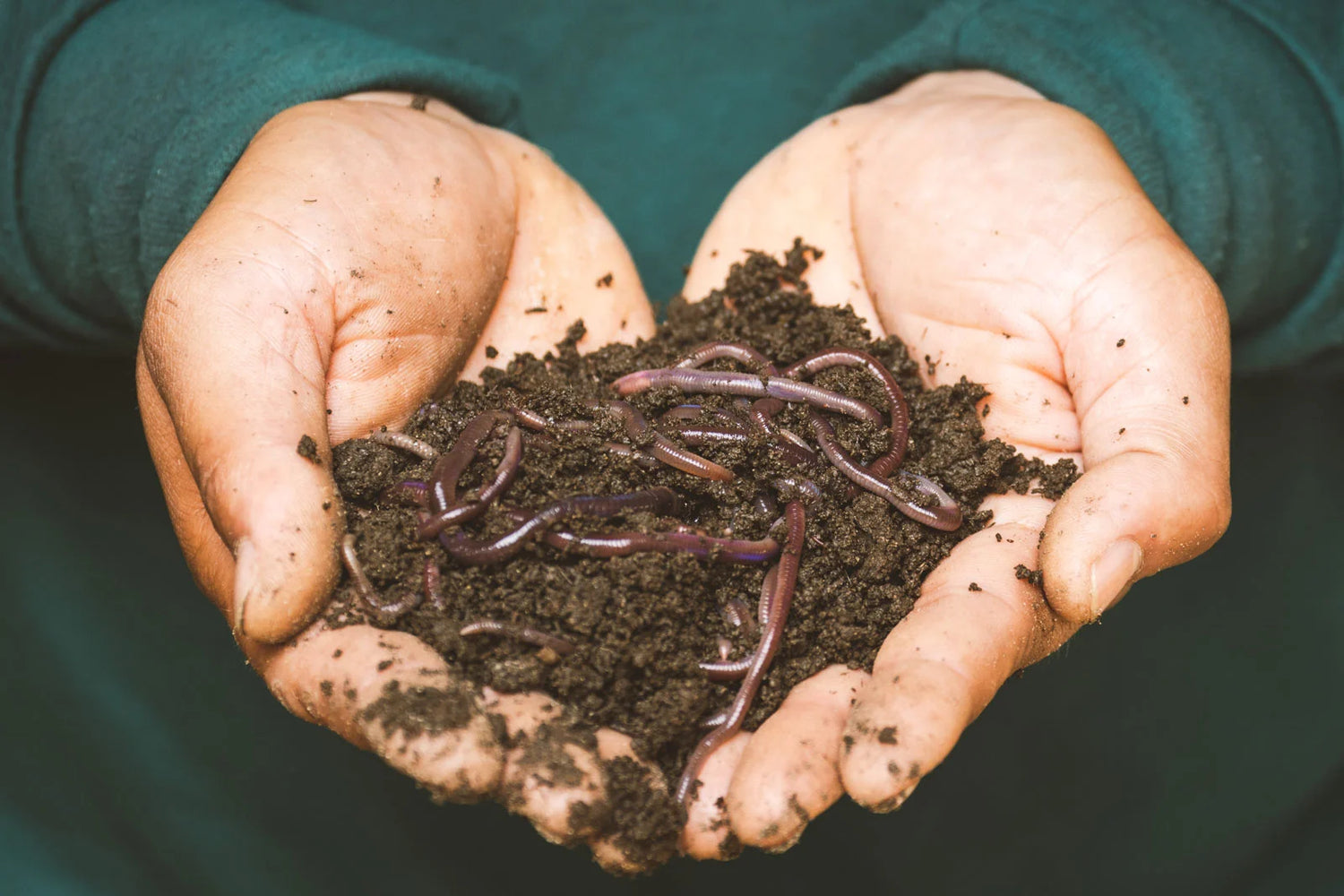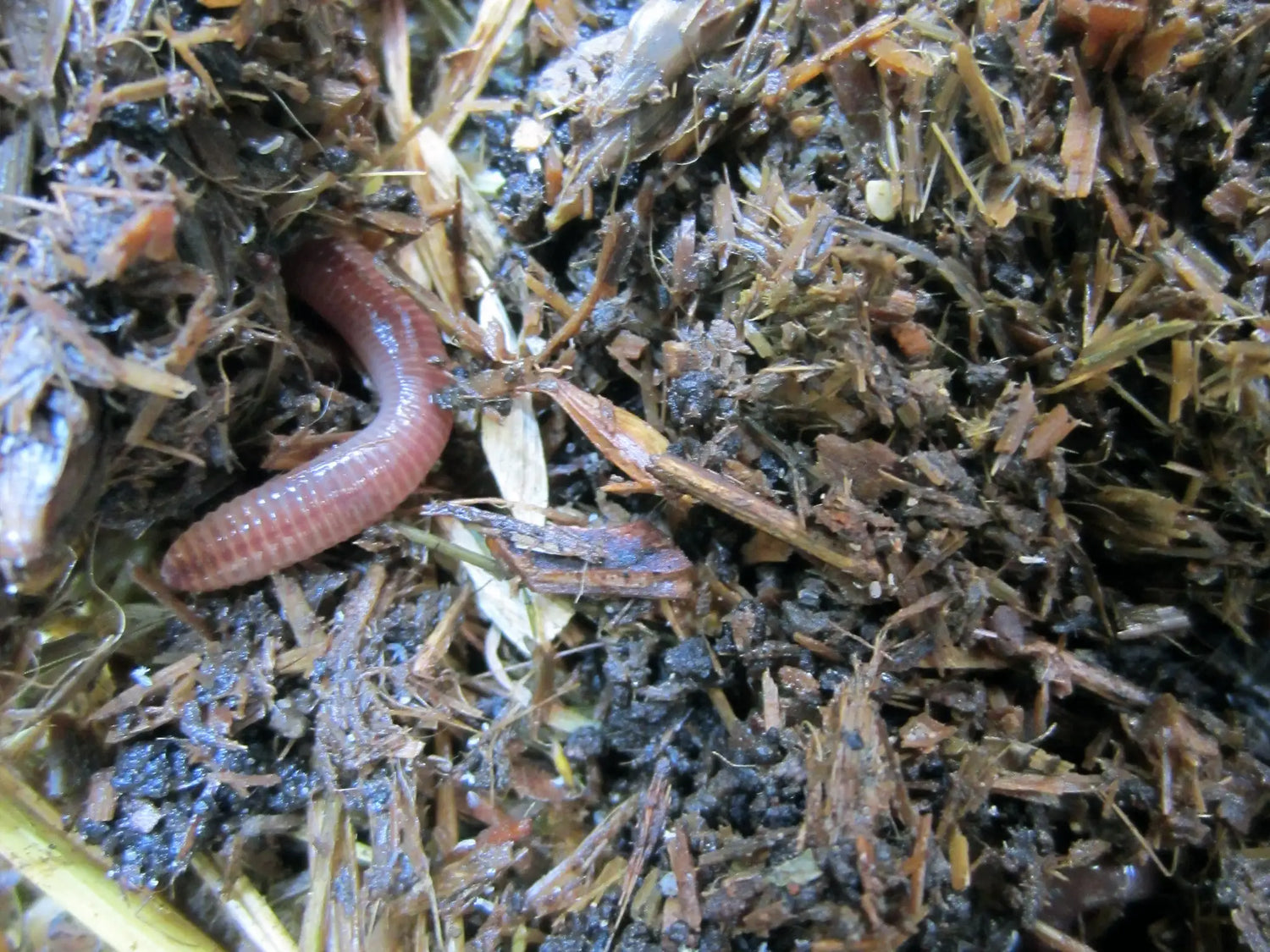The compost worm - a wonder of nature
Charles Darwin already knew that compost worms are fascinating creatures. Together with a variety of microbes, they convert organic waste into valuable worm humus.
Life cycle of earthworms
- Some worm species can live for 8 years, the average age is 2 years.
- Earthworms are hermaphrodites, so they have both reproductive organs. However, they do not fertilise themselves, two worms are needed.
- Earthworms reproduce mainly in spring and autumn, when temperature and moisture conditions in the soil are favourable for them. The worms come to the surface to mate.
- Sexual maturity is indicated by the girdle in the foremost third of the worm. From this point onwards, you can recognise where the front and back are: the girdle is at the head end.
- After mating, the girdle moves to the front end until the worm pulls itself out of it. During this process, the eggs are released and fertilised. The stripped girdle becomes a lemon-shaped cocoon. There are 8-20 eggs in a cocoon, of which about 2 hatch.
- The compost worm hatches after 16 days at 25°C and is sexually mature after a further 9 weeks, while the dew worm takes up to 135 days to hatch at 12°C.
Anatomy of earthworms
- Earthworms are the largest soil invertebrates.
- The compost worm (Eisenia fetida) reaches a body length of 6-13 cm and is 3-4 mm thick.
- There are around 3,000 species of earthworm worldwide, almost 40 of which live in Switzerland.
- The Australian earthworm (Megascolides australis) reaches a body length of around 2 metres and can be 2.5 cm thick.
- The compost worm is reddish in colour with yellowish rings and can therefore be clearly distinguished from the other species.
- All worms breathe through the skin.
- Earthworms can survive in water as long as it contains enough oxygen.
- Earthworms have 5 pairs of "hearts".
- Worms have tiny bristles on their skin that they use to move around.
- Earthworms have neither eyes and ears nor a nose. They have sensitive light sensory cells, a sense of touch and gravity and a very good sense of taste.
- Earthworms do not tolerate sunlight: Ultraviolet sunlight leads to respiratory distress in the weakly coloured animals the next day and, after a state of paralysis, to death.
- The earthworm is one of the few creatures that can form clay-humus complexes, which are valuable for soil fertility.
- On average, worm faeces contain five times more nitrogen, seven times more phosphorus and eleven times more potassium than the surrounding soil.
- 1 ha of pastureland can feed one cow (0.5 tonnes); below ground it is 4 cows (3-4 tonnes) in the form of soil organisms, including up to two cows (1 tonne) of earthworms.
- On a pasture, 3 tonnes of earthworms produce up to 600 tonnes of worm castings per hectare and year.
- Earthworms are tunnel builders: 200 g of earthworms create a tube system with a maximum extension of 900 m in one cubic metre. On one hectare this amounts to 9,000 km.
- Earthworms are one of the strongest creatures in relation to their body size: They can lift 50 to 60 times their own body weight (1323 g/cm2; compared to humans: 200 g/cm2).
- Earthworms have calcium glands: this enables them to absorb calcium compounds from food and counteract acidification by binding excess CO2 with dissolved lime and excreting it as calcium carbonate.
- Worms consist of up to 70% protein and are therefore a favourite food.
Behaviour of the compost worm
- Compost worms eat up to half their own weight per day.
- Worms have no teeth: they suck in the material and utilise the carbohydrates and proteins of the dead plant remains and the microorganisms living on them; decomposition is carried out by the microorganisms in the worms and by mineral particles as grinding stones.
- In case of danger, the compost worm secretes a foul-smelling yellow liquid through its back pores to protect itself from predators; hence the species name foetida (smelly).
- In an emergency, the worm has the ability to cut off its rear end (up to 50 segments, the worm has up to 200 segments in total, the compost worm has 105 segments), for example if a bird tries to pull the worm out of its living tube in the ground by its rear end. Some of the segments grow back again. This behaviour has also been observed in cases of severe over-acidification..



